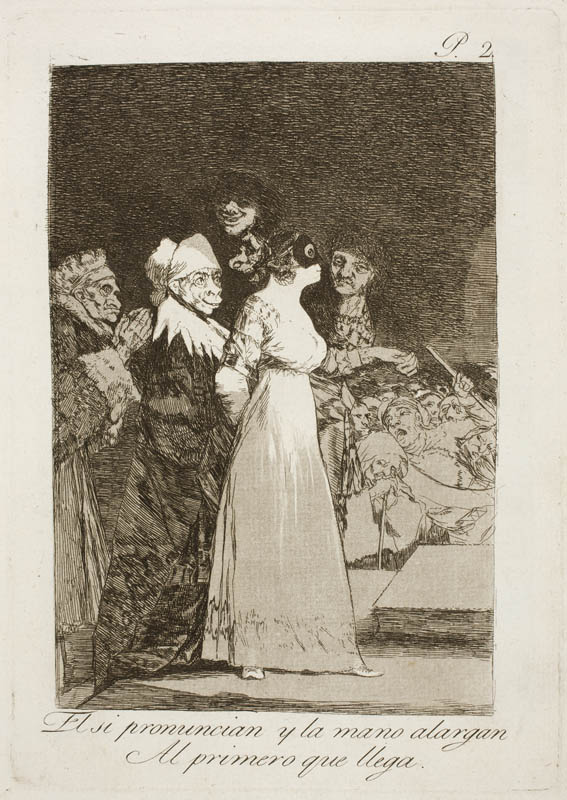Capricho No. 2: They say yes and give their hand to the first comer
(El sí pronuncian y la mano alargan al primero que llega)

The work was an enlightened, tour-de-force critique of 18th-century Spain, and humanity in general. The informal style, as well as the depiction of contemporary society found in Caprichos, makes them (and Goya himself) a precursor to the modernist movement almost a century later. The Sleep of Reason Produces Monsters in particular has attained an iconic status. Goya added brief explanations of each image to a manuscript, now in the Museo del Prado; these help greatly to explain his often cryptic intentions, as do the titles printed below each image. Goya's series, and the last group of prints in his series The Disasters of War, which he called "caprichos enfáticos" ("emphatic caprices"), are far from the spirit of light-hearted fantasy the term "caprice" usually suggests in art. Toggle Menu